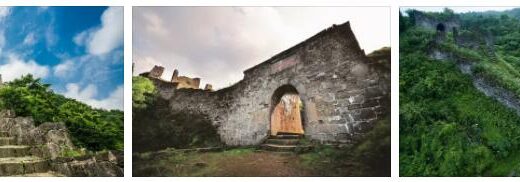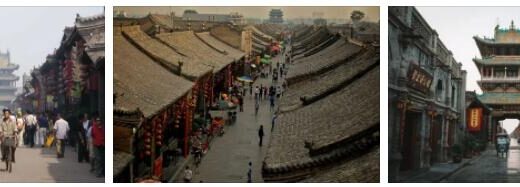Nanjing, China
Nanjing [Chinese »southern capital«], Nanching [-d ʒ i ŋ ], Nanking, capital of Jiangsu Province, China, on the right bank of the Yangtze River (300 km above its mouth), 8.0 million residents in the entire administrative area, thereof 5.83 million residents in the city districts;University (founded in 1902), TU, technical colleges for aerospace engineering, mechanical engineering, hydraulic engineering, pharmacy, agriculture and forestry, art academy, numerous scientific research institutes, including institutes for paleontology, geology and soil science of the Chinese Academy of Sciences; astronomical observatory; Museum of Art History, Libraries, John Rabe House (opened in 2006; memorial and museum for the exhibition “John Rabe and the International Security Zone”); zoological and botanical garden. Nanjing is a modern industrial city, mainly with petrochemical industry and oil refinery; traditional textile and porcelain industry, cement industry, construction of heavy goods vehicles, power plant equipment, textile, tool and agricultural machines, iron and steel works, Electronics and optical industry. Is the port and commercial center of the city Siakwan; Petroleum Port (since 1979); Due to the two-storey road and railroad bridge built between 1960 and 1968 (about 7 km long; 80 m high supporting pillars), Nanjing is an important traffic junction; international Airport.
Cityscape
The Ming period city wall (33 km) has largely been preserved. In the city center the drum tower (Golou; 1382) with its bell tower (19th century). The former palace of the King of Heaven (Tianwang Fu; 19th century) is now the seat of the provincial government. The Black Dragon Lake (Xuanwu Hu) in the northeast of the city, formerly an imperial amusement park, is now part of a people’s park. Only ruins remain of the palace (14th century) of the Ming emperors (Ming Gugong), the main gate (Wuchao Men) and the five-dragon bridge have been preserved. Outside the former city walls, the Purple Mountain (Zijin Shan) borders the city in the east, on its slope the tomb of the first Ming emperors (Mingxiao Ling) built in 1381, whose sacred path is lined with animal sculptures; Sun Yat-sen; further east the Temple of the Valley of Souls (Linggu Si), founded by the first Ming emperors; the hall (Wuliang Dian) built in 1381 is one of the rare examples of pure brick architecture in China. In the south of the city the ox head (Niushou Shan) with the graves (frescoes and relief decorations) of the first emperors of the Tang dynasty. The Terrace of the Blossom Rain (Yuhua Tai) outside the Zhonghua Men gate was the place of execution for political opponents of the Chiang Kai-shek regime (memorial stele). To the southwest, outside the former city wall, is the stone town (Shitou Cheng) built in the 3rd century on Lake Mochou, once surrounded by mighty walls. – 20 km northeast on the slope of the three-peaked mountain Qixia Shan, two graves from the Ming period (some steles and stone figures) and four from the Liang dynasty,
History
According to cheeroutdoor, under changing names, Nanjing was the capital of several empires during the period of Chinese partial statehood (3rd – 6th centuries, 10th century), from 1368 onwards, now called Nanjing (Nanking) for the first time, as the “southern capital” of the Ming dynasty’s seat of government; after 1421 (transfer of the capital to Beijing) it remained the second capital. From 1853-64 Nanjing was the capital of the Taiping movement, in 1927 it became the state capital under the national government and formally remained so even after the occupation by Japanese troops (December 1937) and the relocation of the seat of government to Chongqing (until 1947; formation of a pro-Japan counter-government in Nanjing) until for the conquest by the communists in April 1949. In 1953 Nanjing became provincial capital.
Story addition
The Nanking Treaty (August 29, 1842), concluded to end the British-Chinese Opium War, ushered in the period of “unequal treaties” (treaty ports) and thus marked a turning point in European-East Asian relations.
After Japanese troops captured the city on December 13, 1937 during the Sino-Japanese War, they carried out a six-week massacre of prisoners of war and the civilian population that (according to various sources) claimed between 200,000 and more than 300,000 deaths; there were mass rapes of women and girls, and around a third of the city fell victim to pillage and pillage. An “International Zone” set up by foreigners under the leadership of John Rabe (* 1882, † 1950; German representative of Siemens in Nanking (Nanjing) and NSDAP member) to protect the residents saved the lives of many thousands of Chinese. The Nanking massacre is at the center of a fierce controversy between Japan, where historical revisionist and ultra-conservative forces repeatedly interpreted the gruesome events only as an “incident”, and the People’s Republic of China, which accuses Japan of playing down its war crimes during the occupation of China in 1937-45.



